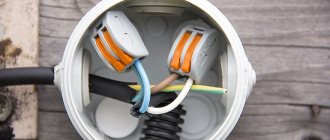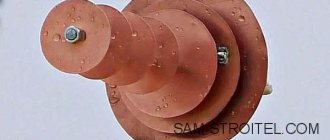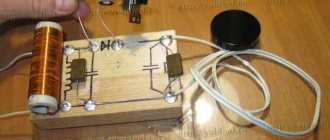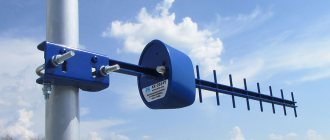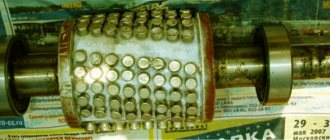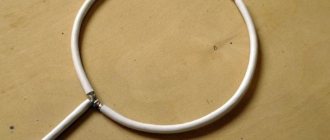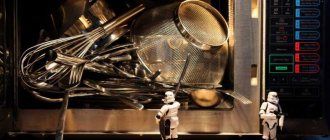Home / Electric boilers
Back
Published: 11/17/2020
Reading time: 4 min
0
2210
Electric boilers for heating and hot water supply, due to their full automation, have recently become increasingly popular. Modern factory-produced electric boilers have one very serious drawback - their high cost. Therefore, many home craftsmen are interested in how to make an electric boiler with their own hands.
Market analysts for electric boilers believe that this popularity will only grow in the next decade, especially in connection with the development of household non-traditional solar energy. Which is an alternative source of energy for such boilers.
To implement the idea of a homemade electric boiler, a home craftsman will need to have the skills of a mechanic, welder and electrician or invite such specialists to be his assistants.
- 1 Power calculation 1.1 For a house of 50 square meters
- 1.2 For 100 square meters
What tools will you need?
To assemble homemade electric heating and encounter a minimum of difficulties, you must have high-quality tools at your disposal.
To work you will need:
- welding machine - it is most convenient to work with an inverter model;
- cutter – if you don’t know how to use a gas cutter, it’s better to use a plasma cutter;
- grinder - you will even need 2 models - a large one for a disk with a cross-section of 230 mm and a small one for a disk with a cross-section of 125 mm;
- electric drill;
- hammer;
- core;
- tape measure and compass.
Installation and connection
After the heating and hot water circuit with shut-off valves, check valve, safety valve, expansion tank, temperature sensor and heating devices has been assembled, a hydraulic test of the entire system is performed for the tightness of the assembled circuit with the operating pressure of the pump.
The network is filled with water, pressure is created by a circulation pump, and all connections are carefully checked for drips or leaks. All faults are eliminated and we proceed to testing the assembled power supply circuit.
The electrical circuit must be assembled by a certified electrician, who must assemble the circuit with grounding and test the operation of the heating elements and the boiler’s overload protection. To prevent this from happening, install a residual current device.
Electric boiler on heating elements
The do-it-yourself electric boiler circuit with a heater is the easiest to implement and has been known for quite a long time.
Operating principle of a heating element boiler
The design of all household appliances in which heating elements (heating elements) are installed is the same. When the power is turned on, voltage is applied to the heating element, which gradually heats up and transfers thermal energy to the liquid located around it.
The advantages of such devices:
- a wide range of heating elements of various shapes and power;
- Possibility of use in any heating system with liquid coolants;
- insulation is installed on the boiler body, so that voltage is supplied exclusively to the heating element;
- do not require complex maintenance;
- The heating level is very easy to control, even with a minimal set of automatic controls.
Among the disadvantages of a homemade electric boiler of this type are:
- “gluttony” in electricity consumption, since heating 10 m2 of area requires 1 kW of power;
- impurities in the coolant accumulate on the heating element in the form of scale, so it needs to be cleaned approximately once a year;
- The heating element can only function in the presence of liquid; it is recommended to install an idle speed sensor with it.
Gas heating
Traditionally, the most economical heating method is gas. Considering that Russia is one of the leaders in the production of blue fuel, this method is considered the most inexpensive for the population. Moreover, modern equipment, provided it is connected by specialists, is absolutely safe to operate - if the flame dies out for any reason, the gas supply is immediately stopped.
The model range is very extensive - units differ in size, power, modifications and price. So, for example, a RINNAI boiler with a power of 11.6 kW costs from 33,000 rubles, and a BaltGaz 11 kW boiler costs from 25,000 rubles.
Rinnai RB 107 EMF, 11.6 kW, dual-circuit, closed chamber
When choosing this method, it is necessary to take into account a number of nuances:
- In the absence of a centralized gas pipeline, you will have to use liquefied (ballooned) gas, which will immediately increase the cost of operation by at least 30%.
- To install such a unit, you need a special separate room with good ventilation and a chimney.
- Before installing any gas equipment, approval is required from the relevant authorities, in particular, from Gaztekhnadzor.
- Installation and connection work must be carried out by a specialist, which is also an additional expense.
- To connect a separate branch from a centralized gas pipeline, the costs for technical specifications and other aspects amount to 50-100 thousand rubles.
The efficiency of a gas boiler is relatively high - 85-90%. In general, gas heating can be called economical and convenient, but there are many nuances that can become a hindrance.
VIDEO: The cheaper way to heat a house
Solid fuel equipment
An alternative to gas heating can be solid fuel boilers that burn coal, wood, pellets, briquettes, etc. Heating a house with solid fuel devices is very convenient if the house has neither gas nor electricity. Modern models are equipped with automation and require minimal maintenance.
Quite a wide selection of models according to the fuel used:
Solid fuel units are easy to install and do not require approval or standardized designs. In addition, the cost is lower than other options. For example, the Evan WARMOS-TK-12 kW device costs from 18,500 rubles.
Evan WARMOS-TK-12 kW
The main disadvantage of this type of equipment is the need to manually load fuel, low efficiency - only 70-75% - and the mandatory arrangement of a fuel storage area.
The procedure for assembling a boiler with heating elements with its own rivers
Before you make an electric boiler with your own hands, you should make sure that you have a reliable power supply line. Only equipment with a power of no more than 6 kW can be connected to ordinary networks with a voltage of 220 V and a frequency of 50 Hz. If a more powerful boiler is required, it needs a three-phase wiring and a separate input.
So, we begin assembling a homemade electric heating boiler from a pipe with a cross-section of 159 mm and a wall thickness of 10 mm. This pipe will serve as the boiler body. It will require either a factory-made hemisphere with a cross-section of 159 mm and a thickness of 10 mm, or sheet metal with a thickness of 8 mm or more of a similar section.
The boiler roof, into which the heating elements will subsequently be embedded, can be made from an 8 mm thick channel.
We cut a ¾-inch coupling into the boiler dome. We will screw the drain valve into this coupling. In addition, you will need 2 pipes with a cross-section of 1 inch for inflow and return. The threads on the pipes can be made both internal and external. It all depends on which one you are more comfortable working with.
To relieve excess pressure, you need to prepare a pipe for inserting the bypass channel. You will also need 3 adapters, each of which will have a heating element for the electric boiler screwed into it. Another adapter will be needed for the temperature sensor. In addition, you will need holders for automation.
Please note that it is advisable to cut the threads on the pipes and adapters immediately.
Prepared pipes with threads, the same as on heating elements, must be immediately screwed into the adapters. This is necessary so that the threads are not damaged during welding to the arch. To mark the insertion points of the heating elements, the outer diameter of the pipe must be divided into 6 equal sectors according to the radius size. Then we draw three identical sectors strictly at an angle of 120°.
The next step is to start cutting. Having finished with the markings, using a plasma cutter we cut out holes for the pipes for the heating elements. They should be cut only along the outer contour. With all other pipes this is not of fundamental importance.
Let's start welding work. First we intercept the pipes at several points so that they do not lead. Then we check the accuracy of the location, if necessary, lightly tap with a hammer, and then make a continuous seam. It is important that the adapters for heating elements in an electric boiler for heating with your own hands protrude 1 cm above the surface of the boiler roof.
Next, you need to make sure that the heating elements fit completely inside the body of the electric boiler. Therefore, after applying a continuous seam, it is necessary to screw the heating elements into the adapters.
Let's start cutting out the vault from the channel. In its center we make a hole for the air valve pipe, after which we weld the pipe itself. We make a hole on the side for the temperature sensor and also weld a pipe under it.
All protrusions, burrs and welding residues must be thoroughly cleaned using a grinder. The inner surface of the arch platform must be perfectly flat. The pipes for installing heating elements will protrude only 1 cm from the outside.
We got a fairly powerful electric boiler with our own hands with 3 heating elements. If you need a simpler unit, using the same principle it can be assembled using 1 or 2 heating elements.
A little more complicated
Drawing of a homemade boiler
Despite the availability of alternative ways to use electricity in heating systems, the best option is still a full-fledged boiler. The boiler body is best made of steel. This choice is justified from the point of view of safety, durability of the structure, and ease of manufacture. You can create a housing using a conventional welding machine. Such work will not require any serious special skills.
You should not make the case large. The more compact the dimensions of the boiler, the more efficiently it works. What to do if the house is large and you need a unit whose power will allow you to heat a large amount of water? Refuse the electric boiler in favor of another type of equipment. Electric appliances are suitable for heating a small country house, but when heating large cottages they will not be the best choice.
The body can have any shape, but it must be hermetically sealed on both sides. There are two holes on both sides. Through one, the coolant is supplied to the system, through the other, cooled water enters the boiler.
heating element
Types of heating elements
The biggest difficulty in making an electric heating boiler is choosing the right heating element. Its power should be enough to heat the coolant and water in the hot water system (if necessary, its arrangement). The power is selected based on the calculations performed. When designing a hot water supply system, it is better to choose a heating element with high power ratings.
The heating element is installed in the housing on the bottom cover, opposite the hole through which cooled coolant is supplied to the heater. It is worth installing shut-off valves in the pipeline next to the boiler to ensure the maintainability of the device. Shut-off valves will allow you to turn off the boiler if necessary without draining water from the system. As a rule, heating systems with an electric boiler are made with forced circulation, which will also require connecting pumping equipment.
Electrical panel
The operation of electrical equipment is ensured by energy from the electrical network. To connect a homemade device to the latter, you will need to construct an electrical panel. You will definitely need to connect a three-phase input. It is better to entrust this part of the work to a qualified electrician, since the cost of an error is disproportionately high.
A starter, automation, relays, and electrical appliance control elements are installed in a metal panel. The system must be grounded. The effectiveness of grounding should be checked annually by employees of specialized organizations. The data obtained by measurements must be recorded in the protocol. The simplest way to perform grounding is as follows. Under the floor there is a structure made of a bolt welded to a metal pin. An electrical wire coming from the switchboard is screwed to the bolt. As you can see, everything is simple.
Factory electrical panel
The electrical circuit of the device will include the following elements:
- Machine.
- Magnetic switch.
- Control buttons.
- Toggle switch and relay.
- Circuit breakers.
- Thermal sensors.
- Additional automation (if necessary).
After connecting to the power supply, you can start the boiler for the first time and test the system.
Assembling a heating boiler on electrodes
Devices of this type have become actively used only in the last 10-15 years. These are more technologically advanced devices compared to heating elements.
Design
In electronic electric boilers, the liquid plays the role of a heating element. A self-assembled electric boiler of this type is a metal casing, inside of which there is an insulated steel electrode.
0 is supplied to the housing, and phase is supplied to the electrode. When voltage is applied, water ions begin to vibrate with a frequency of 50 hertz. In this case, the liquid gradually heats up. Due to this property, such boilers are also called ion boilers.
The dimensions of electrode boilers are small. They can be made from a pipe with a cross-section of up to 320 mm and a length of up to 60 cm. However, an electric boiler for heating a house with your own hands can be made much smaller.
Advantages:
- small dimensions, thanks to which the ion boiler can be placed even in a small apartment;
- the absence of the so-called “dry running”, which guarantees the serviceability of the boiler, since without liquid inside it will not work;
- resistance to voltage surges;
- high heating and cooling speed, which means ease of adjustment;
- efficiency in energy consumption compared to devices using heating elements.
Among the disadvantages of such boilers are the following:
- An important condition for the effective functioning of an electrode boiler is the level of thermal conductivity and the quality of the coolant;
- the device must be reliably grounded, since there is a high risk of electric shock;
- It is important to exclude the possibility of air getting inside the system, otherwise the electrodes will become unusable due to corrosion.
Instructions for assembling a homemade electrode boiler
As a body for an electric heating boiler with our own hands, we use a pipe with an internal cross-section of about 50 mm and a length of 40 cm. In addition, you will need a solid rod with a diameter of 20 mm and a length of 30 cm, as well as two adapters with cut internal threads. At the end of the rod we drill a blind hole with a thread for a Ø10 mm bolt.
We prepare the pipes. We will weld 1 at the end of the pipe, and the other at the side. To ensure that the side pipe fits perfectly to the pipe, it is trimmed with a grinder and then sanded with a round file.
We cut holes for the pipes. If you don’t have a cutter, you can drill many small holes around the circumference. The work is brought to perfection with a needle file and a round file. The hole for the side pipe must be located 10-15 mm from the edge of the pipe.
The next step is to weld the pipes to the pipe. To prevent them from being led away, they first make spot welding in several places, and then apply a continuous seam.
We prepare the platform for the electric boiler. To do this, you can take a sheet of fiberglass 2 cm thick and cut a piece of 120x120 mm using a hacksaw. Then in this platform you need to drill one hole in the center, and four around the perimeter. The cross-section of the holes should be 10-12 mm.
Fastenings of the boiler body will be passed through the holes along the perimeter, and the central hole is intended for fixing the steel electrode.
We proceed to fixing the casing for the boiler to the platform. To ensure a secure fit, four Ø12 mm nuts can be welded on the body on 4 sides. Bolts Ø10 mm will easily pass through them.
Such nuts need to be welded with a slight indentation from the platform. To ensure this, you need to screw nuts of appropriate size onto the bolts, thread them into the wide nuts, and secure them from below again with smaller ones. This will make welding work easier.
At the last stage we perform the final assembly of the boiler. To do this, cut out a rubber gasket with a cross-section slightly larger than the outer diameter of the boiler. We make a hole in its central part and thread an electrode through it. Then we install the body on the platform and screw it on.
Working principle of electric induction boiler
If we omit the details, then the operation of an induction boiler is based on heating the coolant through a magnetic field.
Among the advantages of such units:
- high efficiency;
- safety;
- possibility of using any coolant;
- no scale.
Disadvantages can be considered:
- high cost of factory boilers;
- complexity of the structure of the automatic control unit. Without preparation it will be difficult to assemble it.

